Technical characteristics of the washing machine motor
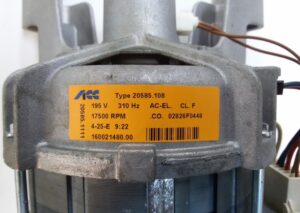 It often happens that some part of an automatic machine completely fails and it becomes impractical to repair it. But it contains many details that can be useful on the farm. For example, an electric motor is often used by craftsmen to create various machines. First, you need to understand the technical characteristics of the washing machine engine in order to find out what kind of device you have on your hands and what kind of homemade product you can make with it.
It often happens that some part of an automatic machine completely fails and it becomes impractical to repair it. But it contains many details that can be useful on the farm. For example, an electric motor is often used by craftsmen to create various machines. First, you need to understand the technical characteristics of the washing machine engine in order to find out what kind of device you have on your hands and what kind of homemade product you can make with it.
Types of motors from washing machines
The electric motor of the washing machine is a reliable part that very rarely breaks down. That's why Motors from machines that have been used for 20-30 years are quite suitable for recycling. With their help, craftsmen construct lathes and emery machines, apple and grain crushers, small concrete mixers, lawn mowers and other useful household devices.
Washing machines can have a commutator, inverter or asynchronous electric motor.
Let's figure out how electric motors differ, what features are typical for certain power devices. Let's tell you what elements different engines consist of.
Commutator motors are considered the most common today; they are found in most automatic machines. The design of such an electric motor contains:
- aluminium case;
- rotor;
- stator;
- two brushes;
- tachometer.
The number of leads for such motors can be from 4 to 8. Electric brushes are necessary here to create a connection between the rotor winding and the motor. The collectors are installed at the bottom of the automatic machine.Impulses from the engine are transmitted to the drum pulley via a belt drive.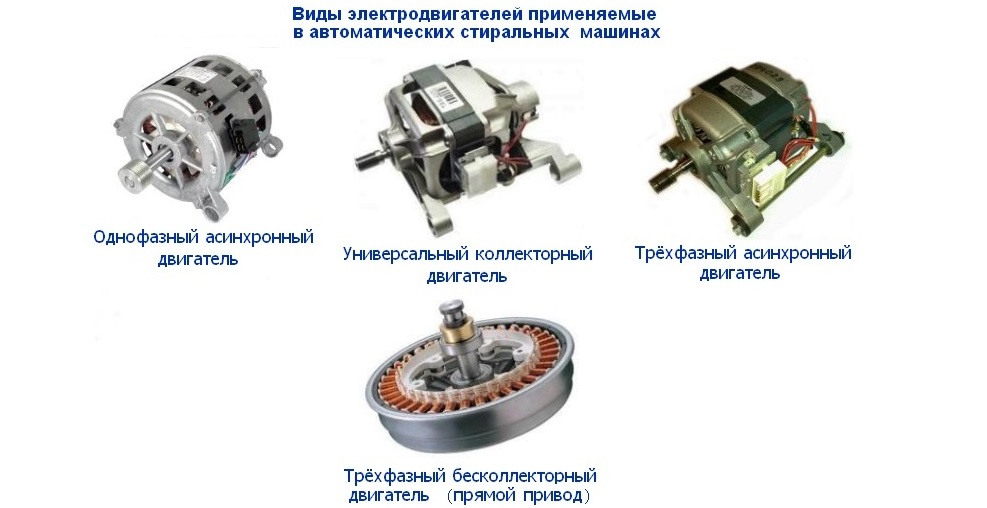
Inverter motors are considered the most modern. They first appeared in washing machines of the South Korean brand LG in 2005. Today, this innovative development is already used by many manufacturers - machines with a direct drive system are produced by the brands Bosch, Samsung, Haier, Whirlpool, AEG and others.
Inverter motors are connected directly to the drum. These machines do not have a pulley or drive belt. The design of electric motors of this type includes:
- rotor (it is a cover with magnets);
- stator (these are several cages with coils);
- a frequency converter.
Inverters do not have brushes, which on the collectors have to be changed every 3-5 years. The armature is formed on magnets. During operation, the voltage is directed to the stator winding, converted into an inverter form.
Asynchronous motors are now almost never used in the production of automatic machines, but they are what are used in old activator washing machines. Such engines come in two- and three-phase types. You can find engines of this type on early models from Bosch, Kandy and Ardo.
The asynchronous engine in the machines is located at the bottom, it communicates with the drum through a drive belt. The design has a rotor and a stationary stator. Such engines are simple and easy to maintain. If bearings are changed in time, the devices can operate for decades without complaints.
Characteristics of asynchronous electric motors
On the earliest models of activator washing machines from the brands Bosh, Candy, Miele, Ardo you can find asynchronous motors. These are the most primitive electric motors with the simplest design.Such power devices are capable of operating at ambient temperatures from -60 to +85 °C.
According to its design, an asynchronous motor consists of two main parts - a rotor and a stator.
The stator of an electric motor is a stationary element consisting of a metal body and winding. An engine rotor is a rotating part that contains a core and a shaft. The core is made of several steel plates and is necessary as the basis for the rotary electrical winding.
The scope of application of such engines is quite wide. Using an asynchronous engine from an old machine, you can make a lathe or sanding machine, a pumping station, a lawn mower, a fan, a gearbox and other systems. This is why craftsmen never throw away the electric motor from a broken washing machine, but give it a “second life”.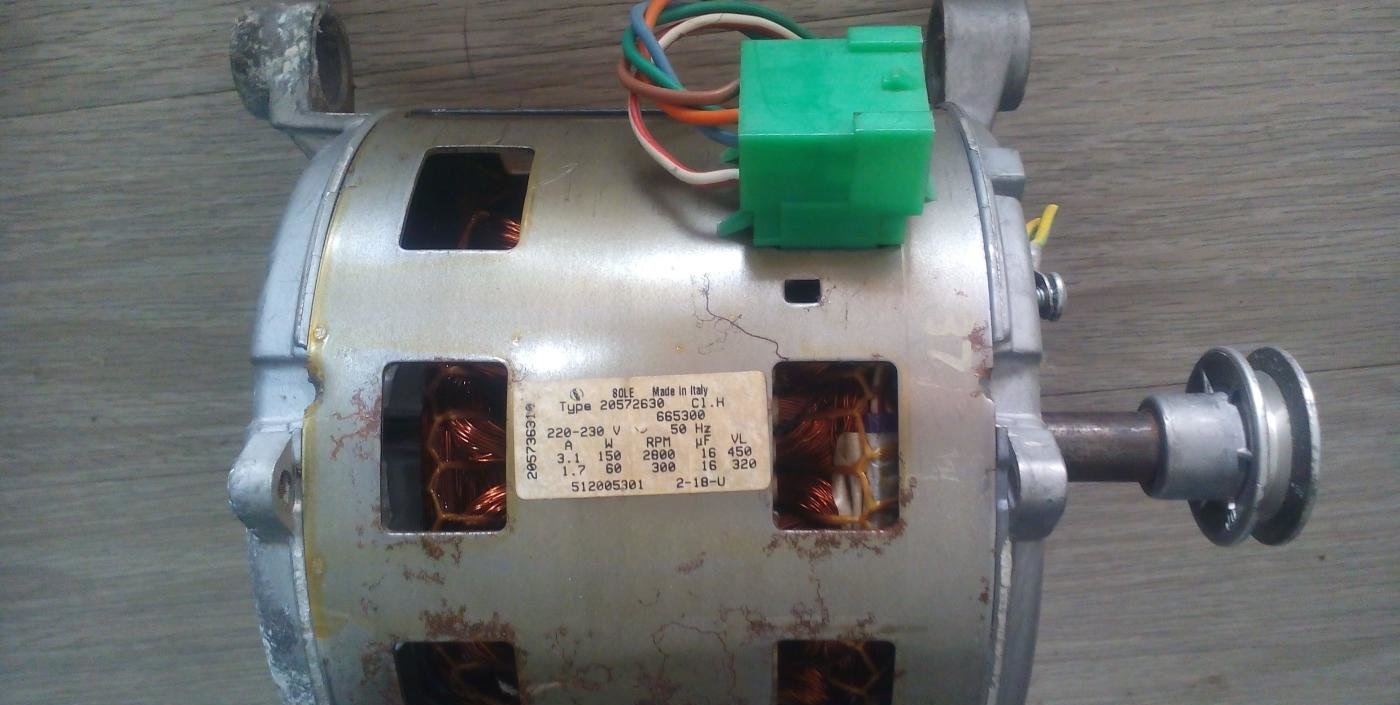
The general technical characteristics of asynchronous power devices found in activator washing machines are as follows:
- power - from 180 to 360 watts;
- received voltage – 220 Volts (+-22 V);
- synchronous rotation speed – up to 3000 rpm.
During operation, an asynchronous motor produces noise within 50 dBA. Some models of power devices may have built-in temperature protection. Manufacturers usually set the following restrictions on the use of such electric motors:
- up to 30 starts per hour;
- no more than two hundred launches in 24 hours;
- the total number of launches per year is no more than 30 thousand.
At operating temperature, such engines are capable of withstanding an increased rotation speed of 20% of the standard speed for 120 seconds without any deformation or other damage. They can also “resist” a fifty percent overcurrent for 2 minutes.All this indicates the high reliability of power devices of this type.
Characteristics of commutator electric motors
These engines replaced asynchronous ones and took their “position” for a long time. Today, about 80% of washing machines in the low and medium price segment are equipped with just such electric motors. The operation of collectors can be ensured by both direct and alternating current.
As already mentioned, the commutator consists of a stator, a tachometer that regulates the rotation speed, a rotor, bearing shields and at least two brushes. Graphite rods tend to wear off, so they need to be changed periodically.
Among the advantages of collectors are compact dimensions, high starting torque and speed. A simple control circuit will also be a plus.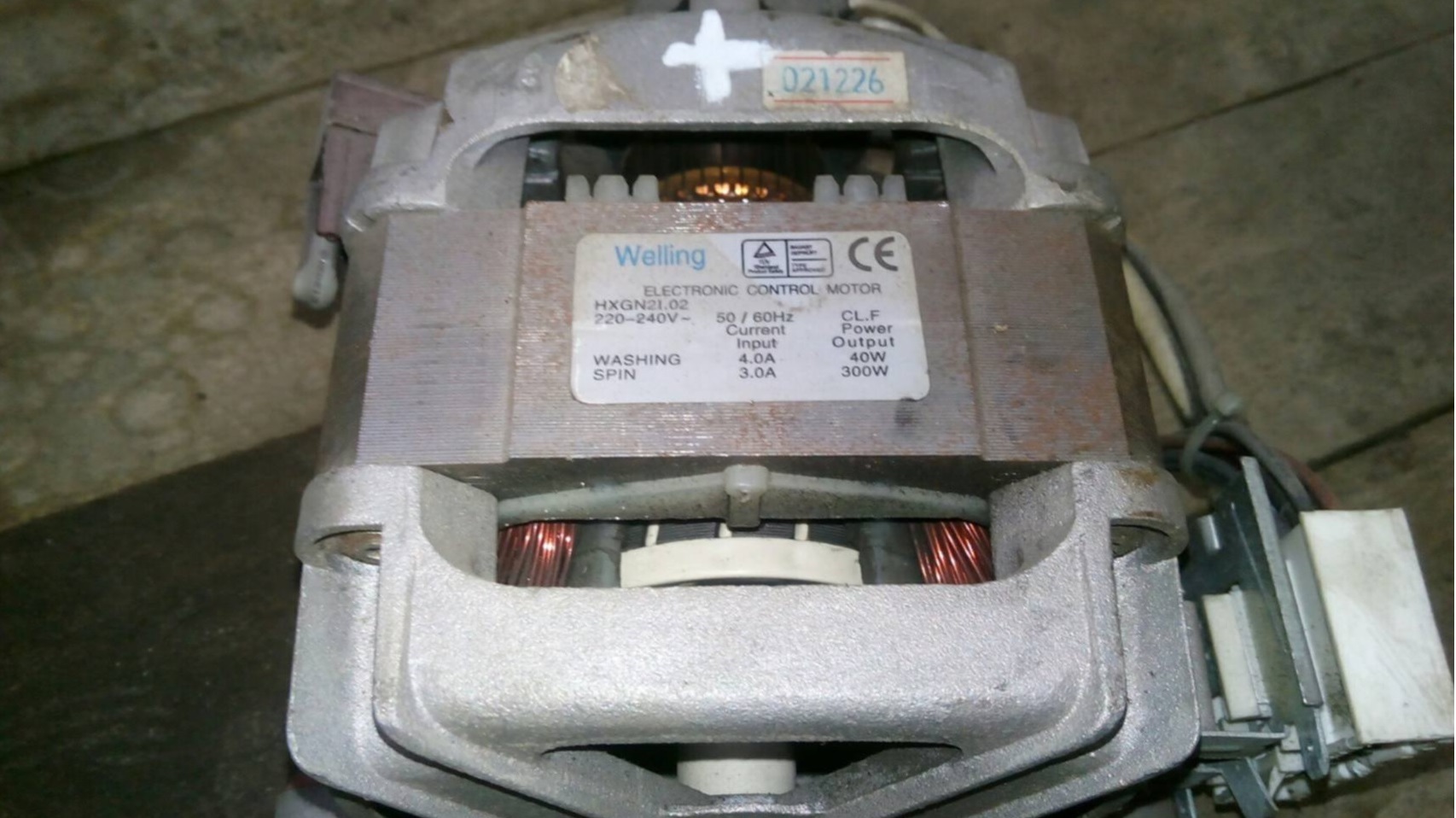
You can understand the technical characteristics of engines of this type using the example of a manifold model DK76-280-12. The main indicators are:
- rated operating voltage – 210-230 Volts;
- frequency – 50 Hz;
- power – 0.5 kW;
- current consumption – 2.25-2.75 Amperes;
- Efficiency – no less than 55%.
The average maintenance-free service life of commutator electric motors is 5 years.
The rotor of the DK76-280-12 commutator is a 12-slot package made of durable electrical steel, mounted on a shaft. The grooves contain a two-layer winding. On the armature shaft there is a fan necessary to supply cooled air. This engine has sliding bearings as supports - they are installed in special sockets.
The connection between the rotor, stator and external winding is provided by electric brushes located in special side holders.During operation, the tips wear out, so they require periodic replacement. Another disadvantage of collectors is increased noise.
Typically, the power of collector motors installed in automatic washing machines varies from 380 to 800 Watts. Therefore, before reusing a dismantled power device, it is better to find the markings on the case and study in more detail the characteristics of a particular model.
Before connecting the motor outside the washing machine, figure out which output of the collector is intended for what. A pair of contacts are needed to connect the tachogenerator, so most likely they will not be needed. The remaining outputs are used according to the diagram.
Characteristics of inverter electric motors
Around the 2000s, with the development of semiconductor devices, frequency converters began to be widely used. Such devices are able to change the frequency and adjust the voltage over a wide range; indicators can vary from 1 to 500 Hz.
The inverter engine is not “powered” directly from the mains, but rather from the converter built into it. The device independently adapts to the operating mode and produces a voltage of the optimal level and the desired frequency. Therefore, an inverter is 2 devices combined in one housing.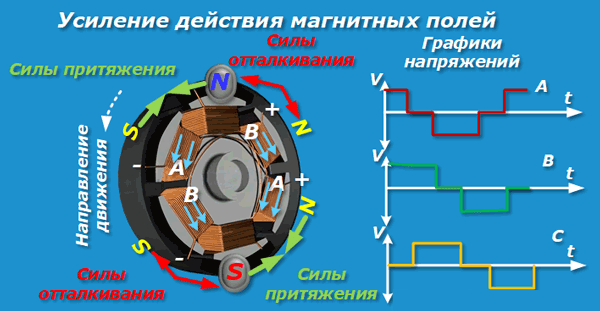
The use of inverter technology makes it possible to obtain a wide spread of speeds and the possibility of multi-level operation of the electric motor. The built-in converter allows you to adjust the voltage, thereby achieving optimal torque. Of course, all this is carried out within certain limits, but the overall performance characteristics of such motors are much better.
Due to a more complex device, the price of inverter motors is higher than that of collector and asynchronous motors.
The inverter converter adjusts the voltage in two stages:
- takes the mains voltage and converts it to constant;
- creates a stream of positive and negative impulses from constant voltage. At this moment, the required frequency is obtained, which is supplied directly to the engine.
Some inverters have one more conversion stage. At the final stage, the pulses are “added” into a sine wave. But the form of the supplied voltage does not have much effect on the operation of the engine, so this process is not provided for on many engines.
Due to the technical features of inverter motors, it becomes possible to control their operation over a wide range. The motor can independently regulate rotation speed, convert voltage, etc.
Interesting:
Reader comments
- Share your opinion - leave a comment



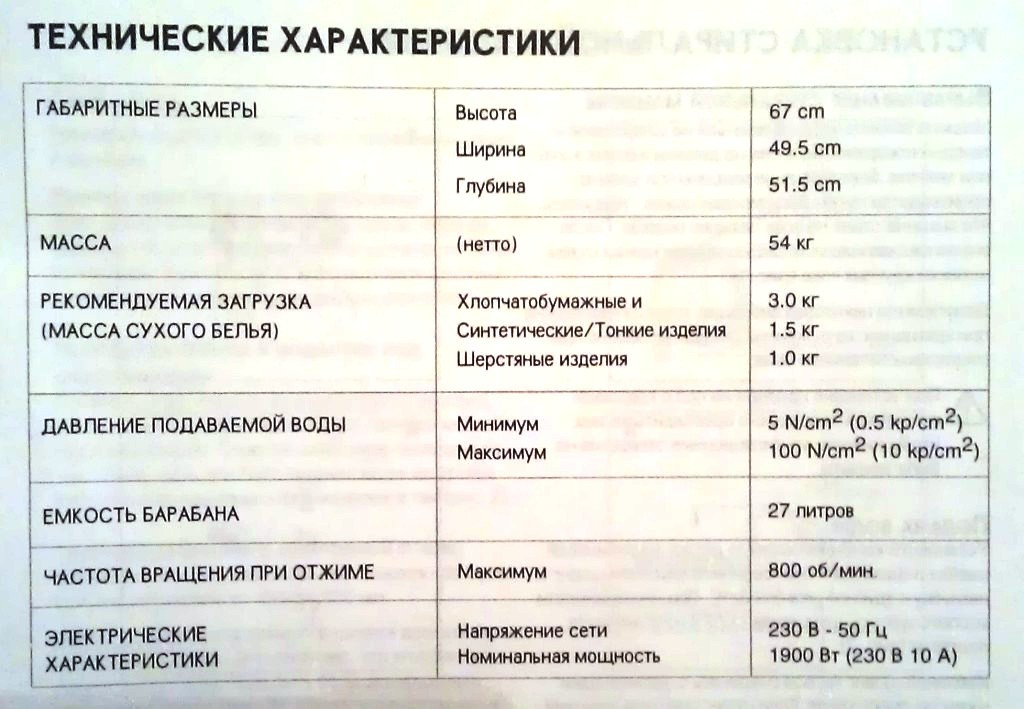


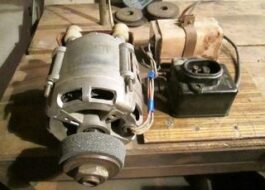














Add a comment